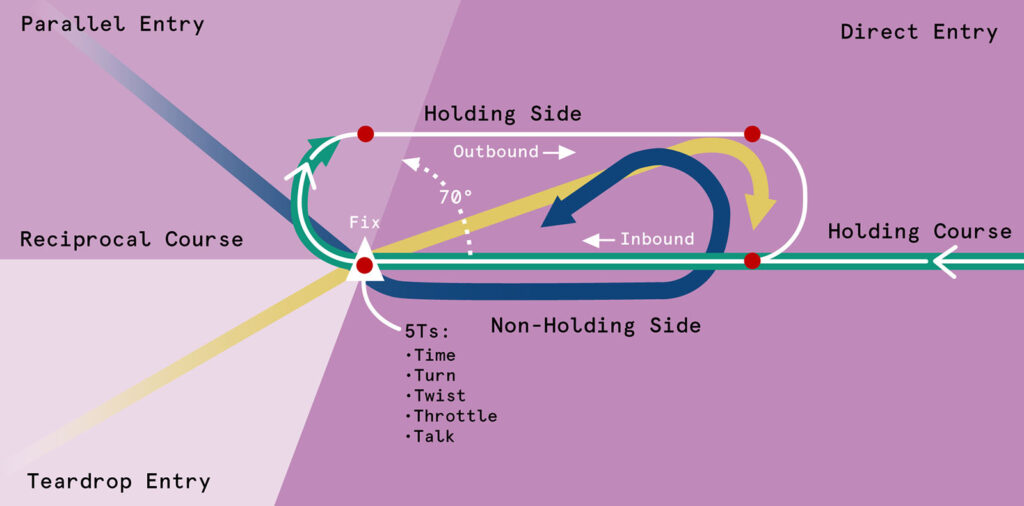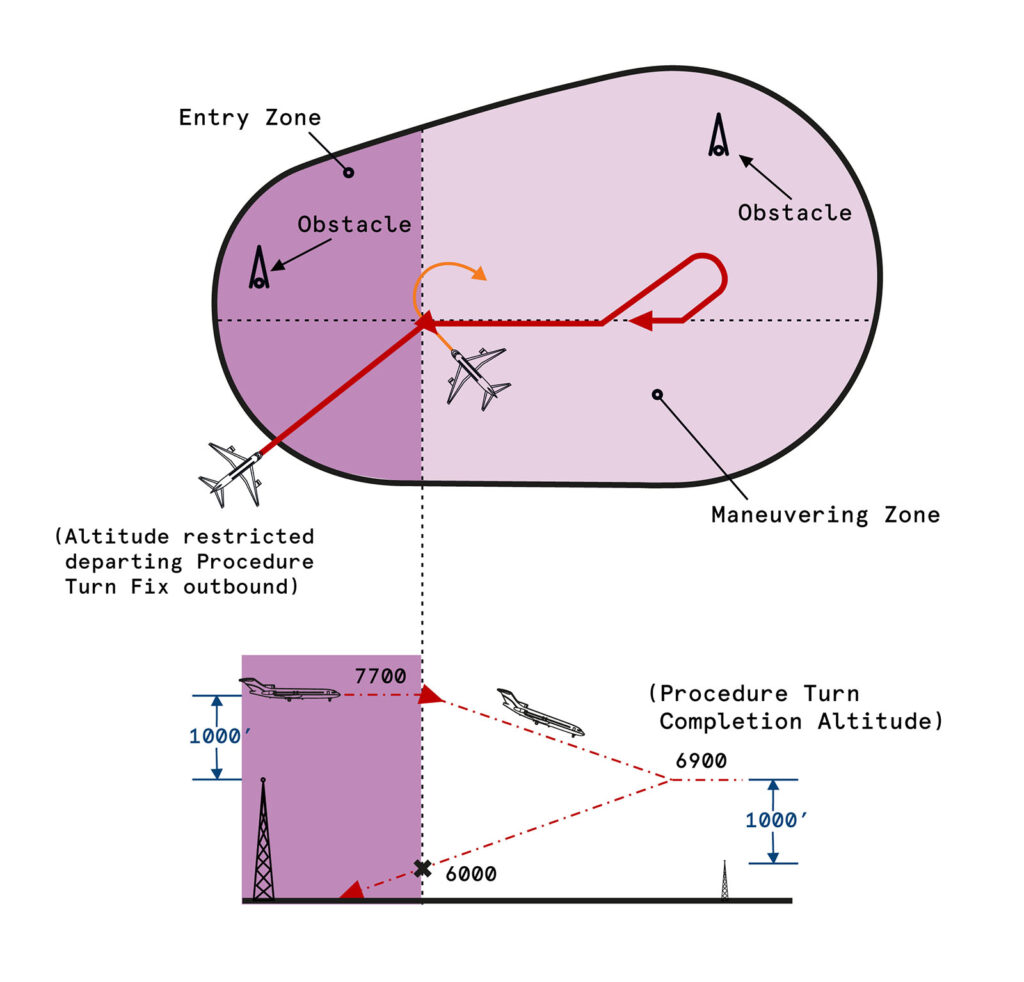Handling holdings: Execution and procedures
When an aircraft approaches the airport in difficult circumstances or cannot land amidst different factors, it has to wait in the air for the approval to proceed with landing by the air traffic controllers.
While waiting for the clearance, the aircraft is moving around in what we call holding patterns, which need to be executed in a designated area or the protected airspace. The latter provides a safety margin, allowing for the variability in aircraft speed and ensuring that there is adequate separation between the holding aircraft and any other nearby traffic. This separation is crucial for preventing mid-air collisions and maintaining overall airspace safety.
The dimensions of the protected airspace vary depending on factors such as the type of airspace, the aircraft’s altitude, and the specific procedures in place at the controlling air traffic facility. Air traffic controllers continuously monitor the aircraft in the holding pattern and surrounding airspace to maintain separation and manage traffic flow effectively. This concept is a fundamental element of air traffic control procedures designed to enhance overall aviation safety.
Speeding through holds
It’s essential for pilots to adhere to the speed instructions provided by air traffic control within the holding pattern to maintain proper spacing and sequencing of aircraft. Specific speed limitations may also be influenced by the type of airspace, aircraft type, and local regulations.
The prescribed holding speed in a protected area can vary depending on the region and specific air traffic control instructions. Pilots are typically instructed by air traffic control to maintain this specific speed during holding patterns, ensuring a consistent and safe operation. According to International Civil Aviation Organisation (ICAO) maximum holding speeds are as follows:
| Altitude (MSL) | Airspeed (KIAS) |
|---|---|
| Up to 14000ft inclusive | 230 (normal condition) 280 (turbulence condition) |
| 14001ft up to 20000ft inclusive | 240 (normal condition) 280 (turbulence condition) |
| 20001ft up to 34000ft inclusive | 265 |
| Above 34000ft | 280 (normal and turbulence condition) |
Source: ICAO 2006. Conventional Holding. Doc 8168: Vol II Part II Section 4
Understanding the types and elements of holding patterns
A holding pattern is a flight path undertaken by aircraft to intentionally delay subsequent actions. Its purpose is to allow the aircraft to spend time within a designated airspace boundary until further instructions are provided. The trajectory, often oval resembling a racetrack, involves flying in one direction for a specific duration or distance, followed by a U-turn to fly in the opposite direction. This sequence repeats as needed, offering a flexible and repetitive manoeuvre until the next set of instructions is received.
Holding patterns are categorized into three main types based on the entry method used by the aircraft:
- Direct entry: The direct entry is the most straightforward holding pattern entry. The aircraft enters the pattern directly from the inbound leg.
- Offset or direct entry: aircraft to execute a 210-degree turn opposite to the holding pattern before joining the inbound leg.
- Parallel entry: flying parallel to the holding course for one minute before making a 180-degree turn to join the pattern.

These entry methods are employed based on the aircraft’s position and direction in relation to the holding fix.
Understanding the role of holding fix
A holding fix refers to a specific geographical point in the sky, usually identified by a navigation aids (Navaids) or a set of coordinates. Aircraft entering a holding pattern use this fix as a reference point for executing the holding procedure. Positioned at the centre of a racetrack-shaped flight pattern, the holding fix serves as the point around which the aircraft circulates until receiving further instructions from air traffic control. The fix is often associated with a radio beacon or waypoint, and pilots use navigation equipment like VHF omnidirectional range (VOR), Distance measuring equipment (DME) etc. to accurately locate and navigate to the holding fix. In congested airspace, multiple aircraft may adopt a holding pattern centred on the same fix, each assigned distinct altitudes, forming what is known as a holding stack. Additional aircraft can be incorporated into the stack, typically above those currently in flight, allowing for efficient air traffic management.

A standard holding pattern the inbound leg is standardized at one minute when below 14,000 feet MSL and extended to 1.5 minutes above this altitude. Timing for the inbound leg begins once the aircraft achieves a wings-level orientation during the inbound turn and ends upon reaching the fix. The duration of the outbound leg is subject to adjustments to counteract the effects of wind. The timing for the outbound leg commences as the aircraft traverses over the holding fix.
How does space-based aviation data simplifies identifying holding patterns?
Space-based ADS-B data delivers real-time insights into aircraft movements, offering comprehensive information on position, speed, and altitude globally. This data empowers analysts to effortlessly identify holding patterns or predict airport congestions, helping them to proactively strategize and implement measures for optimized operational efficiency – a smoother flow of aircraft and minimize delays. Using historic data to model specific seasonal, weather or situational events helps operators and analysts to predict holding occurrences, anticipate delays and optimise operations accordingly to avoid disruptions and save huge costs. Moreover, air traffic controllers benefit from enhanced accuracy in tracking, making the management of air traffic more efficient and boosting overall situational awareness.